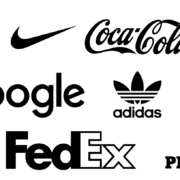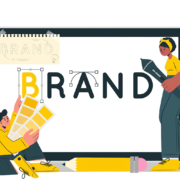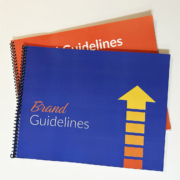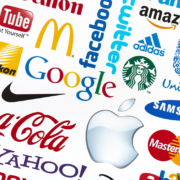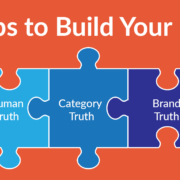How to Create Your Ideal Brand Style Guide
What do you think of when you think of strong brands? Most likely, you said something about their visual identity, whether it be their logo, colors, fonts, etc. While the other aspects of a brand are massively important, there is no denying the huge role that visuals play in a brand’s success.
Because of this, it is very beneficial for businesses, including small businesses, to include a brand style guide in their marketing strategy. A brand style guide serves as your company’s rulebook, dictating how branding elements should look and sound. Usually, as part of a brand book that details the entirety of your brand guidelines, your style guide contains all of the important visual brand elements that you need to achieve brand consistency.
Why Do You Need a Brand Style Guide?
Especially for new brands, a brand style guide is an absolute must-have. Early in a brand’s life, it’s very important to keep your visual elements consistent, otherwise, people won’t grow an attachment and familiarity with your brand. In order to stay on brand (as the kids call it), you need a style guide that can keep you accountable for the imagery you put out for the public to see. The best brands have style guides that they never stray from, keeping them consistent in their brand identity.
What Are the Main Parts of a Style Guide?
Many parts go into a brand style guide in order to encompass all aspects of the visual identity of the brand. The main parts of the style guide are the brand colors, typography, logo, brand story, and brand voice. Each of these parts works together to make up a significant part of your marketing materials and consistently portray your core values.
Brand Story
While you may not expect it at first, the brand story is a key part of your brand style guide and informs all of your other brand assets. A good, compelling brand story, coupled with your mission statement, can prompt the rest of your design elements, with each other part of the guide coming together and tying back into the story of your company, helping you keep a consistent brand.
Your brand personality plays a huge role in how your designs will be shaped later. Fun and lighthearted personalities lead to fun and lighthearted logos and other iconography, whereas more serious personalities lead to more straight-laced designs. Define your brand story now, so you don’t need to worry about a rebrand later if there are inconsistencies.
Typography
The typefaces you allow to be used with your brand need to be decided on ahead of time and should stay consistent. The vast majority of brands decide on a font that they feel reflects their personality and values — and never stray from it. Here are some examples of brands and the fonts that they select for their guidelines:
-
- Apple: “Myriad Set”
- Spotify: “Circular”
- Netflix: “Bebas Neue”
- Starbucks: “Sodo Sans”, “Pike”, and “Lander”
Whether you use one typeface or multiple, make sure that you only use the fonts you have decided on in your logo, business cards, or any other marketing materials. Perhaps you may want a certain font for headings or taglines, but another for regular body text. Just be sure not to stray from the selections you have made, and the circumstances in which you use each specific typeface.
Logo
Not only do you need brand guidelines for creating your logo, but you also need guidelines for its proper use. For starters, make sure the design makes sense for your company and your brand story, and don’t overdesign it. The best logos are kept simple and are easily recognizable even without the company name alongside it. A good rule of thumb to follow is that the logo should look just as good in black and white as it does in color.
Once your logo is finished with the design process, set guidelines for logo usage in your brand kit. For example, explicitly state that the logo should never be color-swapped or that the text should never be rearranged. Or, you can specify what you think is ok, such as allowing the logo to be shown without text in certain circumstances. At the end of the day, you get to decide what is right and wrong with your own brand logo, as long as it makes sense for your brand.
Color Palette
In the past, companies would single out one or two primary brand colors and call it a day. However, many brands now take the time and effort to set up an entire brand color palette for their brand’s graphic design needs to add more flair to their designs. Not only do you need the primary colors of your brand, but pick out secondary colors so your designs are not always one-dimensional and boring.
When setting up your color scheme, make sure you include hex codes for the colors you choose, as well as CMYK codes for print media and RGB values for digital media. It is very important to specify each of these different codes and values to make sure that your brand’s colors are always consistent, regardless of the media being used.
Brand Voice
While not a visual element like the rest, a brand’s tone of voice is still a very important part of the style guide. The brand voice dictates the specific tone, language, and overall way of speaking that the company uses to communicate with its target audience.
Always relay the brand voice back to the brand story and personality you have already created. If your story and personality were light-hearted and full of whimsy, don’t speak coldly and seriously in communication materials. If your audience responds well to your brand voice, it will lead to a more interactive relationship with the customer.
Create Your Own Brand Style Guide!
Now you have everything you need to create your very own brand style guide! As a crucial part of your brand strategy, your style guide will shape your branding going forward into what the public sees and define your brand image. Your brand guide will help you with your social media posts, press releases, website, and any other brand-related project you encounter.
Still unsure if you’re ready to take your brand to the next level? That’s ok! At Lift Marketing, we can help you with your branding, as well as any of your other digital marketing needs! Just reach out to us here, and we can get you started.


